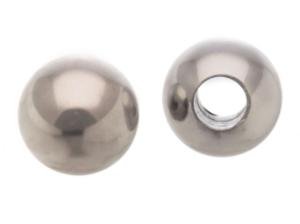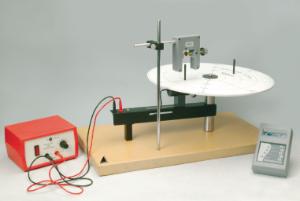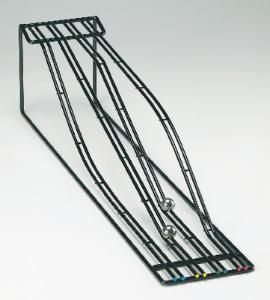Put Your Spin on Football Science
High School
Football season is an exciting time of year. And you can use the popular sport to educate your class about the science behind the power-packed action in every game!
Football uses speed and force with every snap, leap, fumble, kick, tackle, and Hail Mary. Your students will be fascinated by the physics behind it all! With the help of science, technology, engineering, arts, and mathematics, players and teams set records and win seasons!
So what’s your game plan for connecting science to football? Here are some interesting facts to help get your lesson plan into the end zone.
Why does a football spiral?
Any quarterback will tell you that a spiral is the best way to throw a pass. The scientific reason is angular momentum (the analog of linear momentum). While linear momentum is mass in motion, angular momentum is mass in rotational motion. Anything that can rotate or spin has angular momentum.
In football this means:
- A typical forward pass travels in a spiraling motion along a parabolic path.
- Throwing the oblong-shaped football with a spiral will use some of the energy of the pass to spin the ball, which means it will travel a shorter distance.
- The reduction in distance is far outweighed by the benefit of a much smoother flight path.
- The spiral spin gives the ball angular momentum, which helps it maintain the same position throughout its flight.
As any good quarterback knows, a well-spun football must obey the law of conservation of angular momentum: If no external torque acts on an object, then the object's angular momentum must not change.
Since the football’s angle relative to the ground doesn’t change after it leaves the quarterback’s hand, a perfectly aimed throw can be caught by the receiver (or intercepted by a fast-moving defensive player)!
That’s the way the football bounces!
"The man who complains about the way the ball BOUNCES is likely the one who DROPPED it." - Lou Holtz
It’s nerve-racking to watch a fumbled football bounce around unpredictably across the field, bouncing randomly, high, low, short, and long. But, after your lesson plan, the physics behind a bouncing football won’t go over your students’ heads.
The football’s unique shape makes it bounce differently than a spherical ball like a basketball. With each bounce of a spherical ball, the height gets lower and lower. The key here is the effect the ball’s shape has on its spin:
- When you bounce a basketball, it’s not spinning, and its smooth, spherical shape will essentially maintain that spinless state as it bounces up and down.
- When you drop the oblong-shaped football, even a slight change in the angle it hits the ground can send it spinning, and the randomness of the next bounce can cancel the first spin and send it in a different direction.
Students will observe that the highest bounces are the non-spinning bounces. When the bouncing football starts spinning, it doesn’t bounce as high. Why not? Well, it’s all about energy.
- When you first drop the football, it has a finite amount of energy available for any further motion.
- If it hits the ground at the right angle to bounce without spinning, most of the bounce energy is used to get the ball back up.
- If it strikes the ground at the right angle to start spinning, then some of that bounce energy will go into the spin, and whatever’s left over goes into the bounce, making a spinning bounce a lower bounce.
Scientifically speaking, a football held up in the air has gravitational potential energy. When it’s dropped, that potential energy converts to kinetic energy. So a non-spin bounce contains almost pure linear kinetic energy going back up.
In contrast, a spinning bounce has to split the same initial potential energy between linear kinetic energy (going up) and rotational kinetic energy (spinning).
If you’re the player, good luck trying to figure out where to position your hands to grab that bouncing, spinning pigskin.
As game-day approaches, run interference to demonstrate how football, science, technology, engineering, arts, and mathematics meet on the playing field.
Recommended Products
[StartProductBlock]

Second Law of Motion Apparatus
Metal apparatus designed to demonstrate second law of motion.
[EndProductBlock]
[StartProductBlock]

FUNdamentals of Physics Rotational Motion
Investigate the relationship between linear and angular velocity.
[EndProductBlock]
[StartProductBlock]

Potential and Kinetic Energy Tracks
This activity illustrates the relationships of mass, potential energy, and kinetic energy with marble races.
[EndProductBlock]
